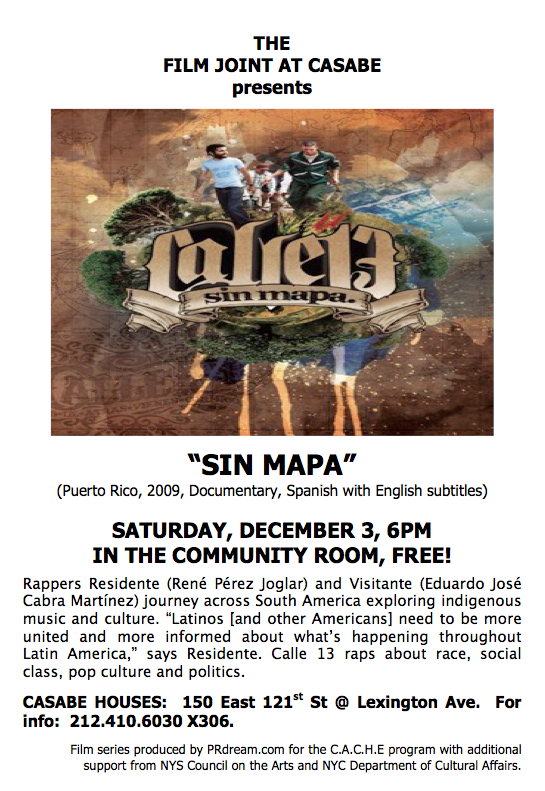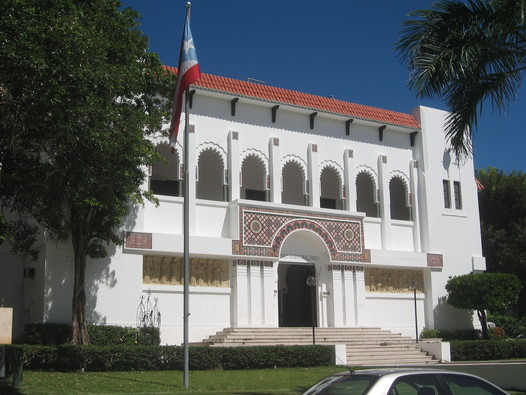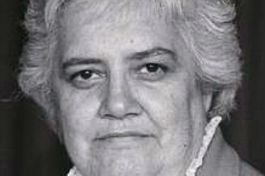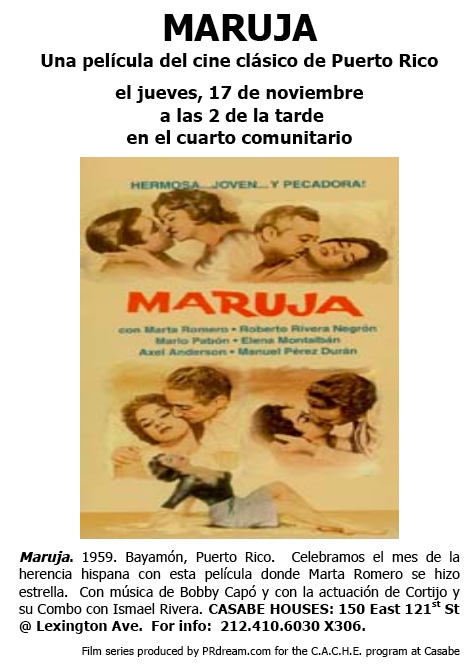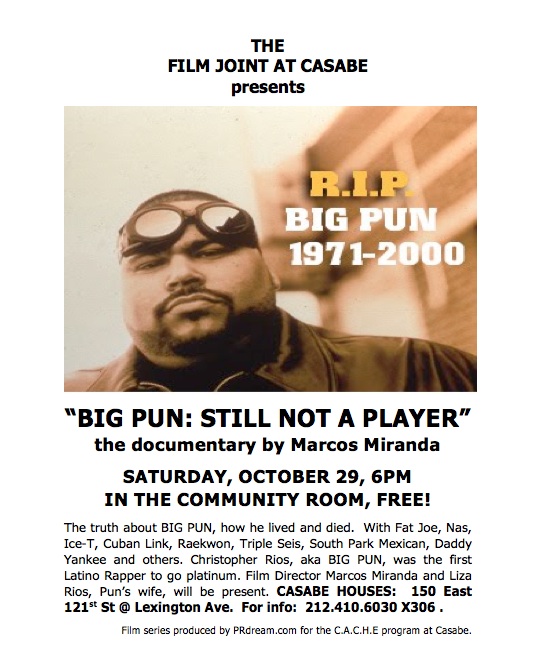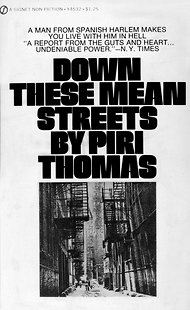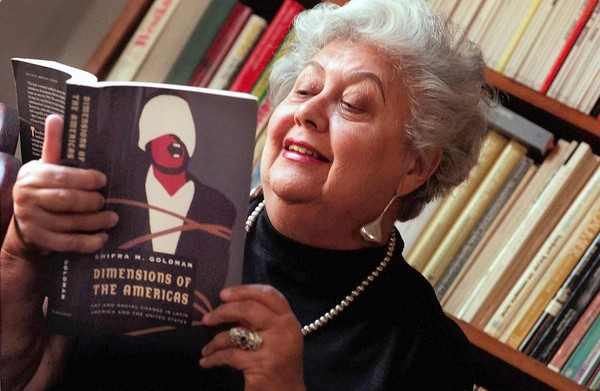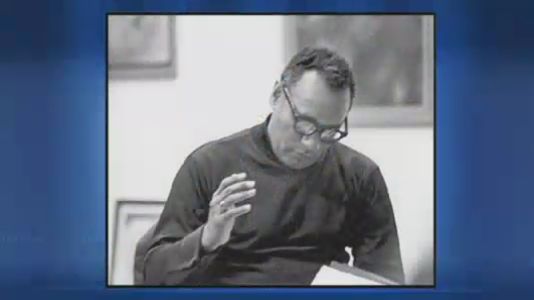All posts by escalona
AMENAZAN EL ATENEO DE PUERTO RICO – ONE OF PUERTO RICO’S OLDEST CULTURAL INSTITUTIONS IS THREATENED
We are using BING’s translator to reproduce this text in English and look further into this in the near future. But read on and learn about a new pressing matter in Puerto Rico, the threatened closing of one of the nation’s oldest cultural institutions el Ateneo Puertorriqueño. English translation follows the original Spanish text.
¡PUERTORRIQUEÑOS — Y LOS QUE APOYAN LOS DERECHOS CULTURALES DE LOS PAISES!
En el día de ayer, la representante del PNP, Sra. Liza Fernández, radicó el proyecto de Ley RC de la C 1270 que adjunto, para quitar TODOS LOS FONDOS que por Ley recibe el Ateneo Puertorriqueño y obligarlo a cerrar.
Se esperaba que el proyecto bajase como descargue en la noche del cierre de la actual sesión legislativa.
Les explico un poco los antecedentes.
Existe una Ley, desde 1935, enmendada consecuentemente desde entonces que garantiza al Ateneo Puertorriqueño para sus operaciones, empleados y cuido de sus colecciones artísticas y bibliográficas la cantidad de $500,000 (que dicho sea de paso fue aumentado de $300,000 a $500,000 por la entonces presidenta de la Cámara, Zaida “Cucusa” Hernández con votación unánime en los dos cuerpos.). La ley es la Ley 224 del 18 de agosto de 2003.
La fiscalización del uso de dichos fondos está en manos del Contralor quien en varias ocasiones ha felicitado al Ateneo por la pulcritud y claridad de sus informes.
Esta asignación está consignada en el Presupuesto Operacional de Gastos del país y aprobada para este año sin corte o enmienda alguna. Por lo que se supone que dicho dinero le fuera entregado al Ateneo en el mes de julio una vez comenzara a regir el nuevo año fiscal. Esta es la hora en que el Departamento de Hacienda no les ha entregado el cheque.
Los empleados no han cobrado, las deudas de agua y luz se montan, y se ha resuelto estar abiertos con ayudas y donativos de aquí y de allá porque es la Casa de la Patria y esta no debe cerrar NUNCA.
En varias investigaciones que allegados del Ateneo han hecho, penetrando en algo el silencioso muro del Gobierno, se ha descubierto que existe una “conspiración” para que dicho cheque no sea entregado. Y que dicha conspiración viene de los “altos” poderes de La Fortaleza.
Ahora aparece este proyecto de Liza Fernández, cuyas gestiones iniciaron en septiembre de este año, para quitar los fondos y dárselos al Centro Médico, (en una oposición muy compleja de combatir pues se quiere dirigir la atención a que el Ateneo se pelee fondos con los niños enfermos, como si ese fuese el único dinero que existe.)
En la Exposición de Motivos esta representante acusa al Ateneo de hacer expresiones políticas, alejándose de su deber cultural. Adjunto las expresiones del Ateneo a las que ella se refiere.
Es decir, que todo el trabajo cultural desde 1876, casi 140 años, que el Ateneo ha hecho en defensa de los valores patrios, la formación de estudiantes (en este momento más de 90 estudiantes del Conservatorio de Arte Dramático del Ateneo se quedarían sin sus clases), la defensa del Idioma español, la defensa del pueblo viequense, la preservación de obras artísticas, la tribuna libre de ideas en la que se han expresado los más importantes intelectuales del país, el fondo editorial, el Archivo Nacional de Teatro y Cine único en el país, van a sucumbir porque el Ateneo ha hecho “expresiones políticas”. Liza Fernández no sabe lo que es el Ateneo, porque una de las secciones del Ateneo es precisamente esa, la de Ciencias Políticas, en este momento dirigida por José Javier Colón Morera, hijo del patriota Noel Colón Martínez.
Así, el Ateneo tiene secciones de literatura, teatro, cine, ciencias físicas, artes plásticas, historia y música, en las que se discute cada uno de estos temas y por supuesto, su relevancia “política” en la actualidad del país.
Violentando la autonomía de las instituciones culturales fundadas desde los tiempos de España, Fernández cree que puede adjudicar la única labor cultural del país al ICPR.
Pues es importante destacarle que en aras de esa tribuna libre, uno de los principales defensores del Ateneo lo fue Don Luis A. Ferré, quien fue socio de toda la vida del Ateneo. Al punto de que cuando Pedro Rosselló amenazó con reducir los fondos del Ateneo en su primer cuatrienio, fue Don Luis Ferré quien públicamente le señaló que “el Ateneo no se toca, por lo que esa institución significa para el país, su historia y su cultura”. Rosselló le obedeció y nada sucedió entonces.
Allí, en la tribuna del Ateneo, han hablado Pedro Rosselló, Carlos Romero Barceló, Ricky Rosselló, muchos legisladores penepés y estadistas, muchos de ellos que constituían la Comisión de Status del Ateneo.
Allí han hablado Luis Muñoz Marín, Rafael Hernández Colón, Aníbal Acevedo Vilá, entre muchos otros. Y de los pipiolos e independentistas, muchos más.
Esta casa es signo de la Nación Puertorriqueña, no un kiosko cultural de collarcitos y piraguas como pretende adjudicarle este proyecto.
El Presidente del Ateneo lo es el Dr. José Milton Soltero, el vicepresidente lo es el poeta nacional Hamid Galib, el secretario lo es el dramaturgo Roberto Ramos-Perea y los demás miembros lo son distinguidos intelectuales del país, como el compositor William Ortiz, el cineasta Pepe Orraca, el Dr. Egdar Quiles Ferrer, la periodista Enid Routté, el Lcdo. Daniel Nina, el Dr. Carlos Severino, la Dra. Vivian Auffant, el Lcdo. Arturo Ríos (ex líder estudiantil), el Lcdo. José Soltero, el editor Elizardo Martínez, la Prof. Haydee Venegas, y el pasado Presidente el Lcdo. Eduardo Morales Coll. Todos comprometidos de manera en extremo seria y responsable con lo que esta institución significa para los más caros valores del país, según reza en los estatutos de su fundación en 1876, de la mano de los padres de la Patria, Don Alejandro Tapia y Rivera, Manuel Elzaburu Vizcarrondo, Manuel Corchado y Juarbe, Salvador Brau, José Julián Acosta, Román Baldorioty de Castro, José de Diego y sus distinguidos socios históricos José Celso Barbosa, Federico Degetau, Francisco Amy, Luis Muñoz Rivera, entre otros muchos “políticos” que desde 1876 se expresaron de maneras políticas” en el Ateneo.
Se ha sabido que el Representante Antonio “Toñito Silva, ha sido en extremo cooperador, al punto de llamar él mismo al Secretario de Hacienda inquiriéndole por qué no se había dado el cheque, sin recibir respuesta alguna.
En la estación Boricua 740 con Luis Penchi, Silva mismo admitió que había “alguien” deteniendo el desembolso.
La senadora Evelyn Vázquez, presidenta de la Comisión de Educación y Cultura del Senado, también fue cooperadora, y se encontró con una intriga en Hacienda donde le dijeron “que el Ateneo había rechazado ese dinero”. Ella pidió esta afirmación por escrito y todavía la está esperando.
Los senadores populares son solidarios y están consternados con esto.
Si destruyen el Ateneo, destruyen lo más sagrado de la Patria Puertorriqueña.
Estemos pendientes de las acciones que se desarrollarán en apoyo al Ateneo Puertorriqueño y que serán convocadas por su Junta de Directores.
Un socio del Ateneo
—
Prof. Roberto Ramos-Perea
Director General del Archivo
Nacional de Teatro y Cine
Rector del Conservatorio de Arte Dramático
Ateneo Puertorriqueño
POBOX 9021180
San Juan de Puerto Rico 00902-1180
ramosperea@gmail.com
ENGLISH TEXT
PUERTO RICANS – AND THOSE WHO SUPPORT THE CULTURAL RIGHTS OF COUNTRIES!
On the day yesterday, the representative of the PNP, Ms. Liza Fernández, lay draft law RC C 1270 attached, to remove all the funds by law receives the Puerto Rican Ateneo and forcing it to close.
It was expected that the project down as a download on the night of the closure of the current legislative session.
I explain a little background.
There is a law, since 1935, consequently amended since that guarantees the amount of $500,000 to the Puerto Rican Athenaeum for its operations, staff and caring for their artistic and bibliographic collections (that I might add was increased from $300,000 to $500,000 by the then President of the Chamber, Zaida “Cucusa” Hernandez by unanimous vote in the two bodies.). The law is the law 224 of 18 August 2003.
The control of the use of these funds is held by the controller who on several occasions has congratulated the Ateneo on the neatness and clarity of their reports.
This mapping is contained in the operational budget of expenditure of the country and adopted for this year without cutting or amends any. For what it is supposed that such money was handed over to the Ateneo in the month of July, a time began to govern the new fiscal year. This is the hour in which the Department of Finance has not delivered them the cheque.
Employees have not claimed, debts of water and light are mounted, and be open with grants and donations from here and there because it is the home of the fatherland and this must not close never has been solved.
In several investigations that relatives of the Ateneo have done, penetrating into something the silent wall of the Government, he has been discovered that there is a “conspiracy” to ensure that this check is not delivered. And that that plot comes from the “high” powers of the fortress.
Now appears this project of Liza Fernandez, whose efforts began in September of this year, to remove the funds and give them to the Medical Center (in opposition very complex fighting because we want to draw attention to the Ateneo was pelee funds with sick children, as if that were the only money that exists.)
In the explanatory memorandum, this representative accuses the Ateneo to political expressions, away from its cultural duty. I enclose expressions of the Ateneo to which it refers.
Namely, that all the cultural work from 1876, nearly 140 years, the Ateneo has made in defense of national values, the training of students (currently more than 90 students from the Conservatory of dramatic art of the Ateneo remain without their classes), defense of the Spanish language, defense of viequense people, the preservation of works of art, the discussion forum of ideas that have been expressed the most important intellectuals of the country, the editorial background, the national archives of theater and cinema only in the country, will succumb because the Ateneo has made “political expression”. Liza Fernandez does not know what is the Ateneo, because one of the sections of the Ateneo is precisely that, of political science, currently directed by Jose Javier Colón Morera, son of Patriot Noel Colón Martínez.
Thus, the Ateneo has sections of literature, theatre, cinema, physical sciences, fine arts, history and music, which discusses each of these issues and of course, his “political” significance today in the country.
Breaking the autonomy of cultural institutions founded since the times of Spain, Fernandez believes that it can be awarded the only cultural work in the country to the ICPR.
It is important to note that for the sake of this gallery free, one of the main proponents of the Ateneo was Don Luis a. Ferré, who was a partner in the life of the Ateneo. To the point that when Pedro Rosselló threatened to reduce the funds of the Ateneo in his first four years, was Don Luis Ferré who publicly stated you that “the Ateneo not touched, so that this institution means for the country, its history and its culture”. Rosselló obeyed you and nothing happened then.
There, in the Gallery of the Ateneo, have spoken Pedro Rosselló, Carlos Romero Barceló, Ricky ROSSELLO, many legislators penepés and statesmen, many of them constituting the Ateneo Status Commission.
There they have spoken to Luis Muñoz Marín, Rafael Hernández Colón, Aníbal Acevedo Vilá, among many others. And the pipiolos and independence, many more.
This House is a sign of the Puerto Rican nation, not a kiosk cultural collarcitos and canoeing as it seeks to assign this project.
The President of the Ateneo is Dr. José Milton Soltero, the Vice President is the national poet Hamid Galib, Secretary is playwright Roberto Ramos Perea and other members you are distinguished intellectuals of the country, as the composer William Ortiz, filmmaker Pepe Orraca, Dr. III Quiles Ferrer, journalist Enid Routté, Esq.. Daniel Nina, Dr. Carlos Severino, DRA. Vivian Auffant, Esq.. Arturo Ríos, Esq. (former student leader). José single, editor Elizardo Martínez, Prof. Haydee Venegas, and past President Atty.. Eduardo Morales Coll. All committed way in extreme serious and responsible with what this institution means to the highest values of the country, as it reads in the statutes of its foundation in 1876, the hand of the fathers of the fatherland, Don Alejandro Tapia and Rivera, Manuel Elzaburu Vizcarrondo, Manuel Corchado and Juarbe, Salvador Brau, José Julián Acosta, Román Baldorioty de Castro”, José de Diego and his distinguished historical partners José Celso Barbosa, Federico Degetau, Francisco Amy, Luis Muñoz Rivera, among other many”politicians”that since 1876 were expressed in political ways” in the Ateneo.
Has been known to representative Antonio “Toñito Silva, has been extremely cooperative, to the point of calling him same to the Secretary of the Treasury inquiriendo you why had not given the cheque, without receiving any reply.”
Station Boricua 740 with Luis Penchi, same Silva admitted that there was “someone” stopping the disbursement.
Senator Evelyn Vazquez, Chairman of the Committee on education and culture of the Senate, was also a cooperative, and met with an intrigue in finance where told him “that the Ateneo had rejected that money”. She requested this statement written and is still waiting.
The popular senators are supportive and are dismayed with this.
If destroyed the Ateneo, they destroy the most sacred of the Puerto Rican homeland.
We are awaiting the actions to be conducted in support to the Puerto Rican Ateneo and which shall be convened by its Board of Directors.
One member of the Ateneo – Prof. Roberto Ramos Perea Director General of the national archives of theatre and cinema Rector at the Conservatory of dramatic art Ateneo 9021180 Yahoo.com Puerto Rican San Juan, Puerto Rico 00902 – 1180 ramosperea@gmail.com
PRdream mourns the passing of Alice Cardona, Community Activist and Latina Rights Advocate
Alice Cardona, Latina Rights Advocate, Dies at 81
Nov. 2, 2011
Staff–Hispanic Business
Alice Cardona, who advocated for women’s rights and bilingual education, died on Nov. 1, 2011, at age 81.
Alice Cardona, who advocated for women’s rights and bilingual education, died Noevmber 1 at the age of 81. She was of Puerto Rican descent and raised and educated in Spanish Harlem in New York. Her parents migrated to New York from Puerto Rico in 1923.
After graduating high school in 1950, Cardona volunteered at the Legion de Maria, where she gave psychological support to black and Hispanic people in need.
During this time she learned about the oppressive social, economic and educational obstacles that these groups faced.
In 1961, Cardona joined the Sisters of St. John, a religios order based in Taylor, Texas, but later returned to New York to work for a financial institution as a program coordinator for United Bronx Parents (UBP).
Her career prospered between 1970 and 1978, during which time she worked at ASPIRA as a counselor for youth and later as a director of counseling for parents and students.
Working at ASPIRA encouraged her to return to complete her degree, which she did in 1973 through an independent study program at Goddard College in Plainfield, Vt. She also was an active member of the National Conference of Puerto Rican Women (NACOPRW). In 1975, Cardona became a member on the national board of NACOPRW.
During this time she founded HACER/Hispanic Women’s Center, which aimed to help Latinas to achieve their professional goals through education.
Between 1983 and 1995, under the administration of New York Gov. Mario Cuomo, Cardona was the assistant director of the N.Y. State Division for Women, where she directed the office’s day-to-day operations.
In this position she further advocated for bilingual education and women, including those in prison. She also worked to combat AIDS/HIV, breast cancer and domestic violence.
Upon retiring in 1995, Cardona remained active with various organizations. She was the director of the Puerto Rican Association for Community Affairs (PRACA); the co-director of the Atrevete, a group dedicated to voter registration and political participation; and a member of the boards of National Women’s Political Caucus, National Association for Bilingual Education, and Puerto Rican Educatiors Association, among others.
In 1997, Cordona was one of 70 U.S. women invited to “Vital Voices of Women in Democracy” in Beijing. She also is the author of a book, “Puerto Rican Women Achievers in New York City,” and she was the first Hispanic woman to receive the Susan B. Anthony prize from the National Organization for Women (NOW).
“MARUJA” — a screening of this Puerto Rican film classic, with Marta Romero, the Puerto Rican bombshell
BIG PUN: STILL NOT A PLAYER — SCREENING SATURDAY, OCTOBER 29, 6PM
Piri Thomas, Spanish Harlem Author, Dies at 83
THE NEW YORK TIMES
By JOSEPH BERGER
Piri Thomas, the writer and poet whose 1967 memoir, “Down These Mean Streets,” chronicled his tough childhood in Spanish Harlem and the outlaw years that followed and became a classic portrait of ghetto life, died on Monday at his home in El Cerrito, Calif. He was 83.
Tyrone Dukes/The New York Times
Piri Thomas in 1971. His memoir was an influential portrait of life in Spanish Harlem.
Signet Books
The 1967 memoir, “Down These Mean Streets,” was a best seller and eventually a staple on high school and college reading lists.
The cause was pneumonia, his wife, Suzie Dod Thomas, said.
The memoir, a best seller and eventually a staple on high school and college reading lists, appeared as Americans seemed to be awakening to the rough cultures that poverty and racism were breeding in cities. A new literary genre had cropped up to explore those conditions, in books like “Manchild in the Promised Land,” by Claude Brown, and “The Autobiography of Malcolm X.”
“Down These Mean Streets” joined that list. The memoir, Mr. Thomas wrote on his Web site, had “exploded out of my guts in an outpouring of long suppressed hurts and angers that had boiled over into an ice-cold rage.”
The novelist Daniel Stern, reviewing the book in The New York Times, called it “another stanza in the passionate poem of color and color-hatred being written today.”
In the memoir, Mr. Thomas described how he was brought up as the only dark-skinned child among seven children, the son of a Puerto Rican mother, Dolores Montañez, and a Cuban father, Juan Tomás de la Cruz. His dark skin, Mr. Thomas recalled, made him feel like an outlier in his own family and neighborhood, where he was taunted about this looks. Even his father, he felt, preferred his lighter-skinned children.
He described the bravado, or “machismo,” that he affected on the streets. Protecting his “rep” led him to “waste” people who insulted him, he wrote. He sniffed “horse” — heroin — even though he knew the consequences. “The world of street belonged to the kid alone,” he wrote. “There he could earn his own rights, prestige, his good-o stick of living. It was like being a knight of old, like being 10 feet tall.”
As a merchant seaman in the Jim Crow South, he wrote, he persuaded a white prostitute to sleep with him because, he told her, he was really Puerto Rican, not black. He then enjoyed stunning her by telling her she had just slept with a black man.
He returned home while his mother was dying in a poor people’s ward at Metropolitan Hospital and resumed his old ways — selling and using drugs and robbing people. In one holdup he wounded a police officer and landed in prison for seven years, a harrowing time he vividly evoked. It was in prison that he finished high school and began thinking about writing. He found, he wrote, that words could be used as bullets or butterflies. He called writing “the Flow.”
“It came very naturally,” he told an interviewer. “I promised God that if he didn’t let me die in prison, I would use the Flow.”
The book, with its harsh language and scenes, was banned by some schools but soon became assigned reading in many others. The poet Martin Espada said its influence was enormous.
“Because he became a writer, many of us became writers,” Mr. Espada said. “Before ‘Down These Mean Streets,’ we could not find a book by a Puerto Rican writer in the English language about the experience of that community, in that voice, with that tone and subject matter.”
Carolina González, a professor of literature at Rutgers University, said her students continue to find the book “very immediate and descriptive of their lives.”
After the memoir Mr. Thomas spent much of the rest of his life lecturing about it. He also wrote two novels, “Savior, Savior, Hold My Hand” (1972) and “Seven Long Times” (1974), several plays and the collection “Stories From El Barrio” (1979). He also set his poetry to music.
John Peter Thomas was born on Sept. 30, 1928, in Harlem Hospital, where he was given the Anglo-Saxon name. “They wanted to assimilate me,” he said in an interview in 1995. “Whoever heard of a Puerto Rican named John Peter Thomas?” His mother called him Piri.
In addition to his wife, he is survived by two sons, Peter Stacker and Ricardo Thomas; four daughters, SanDee Thomas, Raina Thomas, Tanee Thomas and Renee Shank; three stepchildren, Michael and Laura Olenick, and David Elder; seven grandchildren; and two step-grandchildren.
Despite Mr. Thomas’s hardships, Olga Luz Tirado, his onetime publicist, said he had retained a sense of humor. She recalled taking him to a reading in Brooklyn in the 1990s. “On the way back I took a wrong turn and said to him, ‘Piri, I think we’re lost,’ ” she told a reporter. “He asked, ‘We got gas?’ I said, ‘Yes.’ And he said: ‘We ain’t lost. We just sightseeing!’ ”
PRdream mourns the passing of Shifra Goldman, Art Historian and Political Activist
Shifra Goldman dies at 85; champion of modern Mexican Art
By Elaine Woo, Los Angeles Times
Shifra Goldman was a civil rights and anti-Vietnam War activist who joined the Mexican American rights movement in Los Angeles and helped elevate Latin American and Chicano art history into legitimate fields of study.
In the early 1970s, when Shifra Goldman proposed a doctoral dissertation on modern Mexican art, her professors at UCLA sneered. Compared to European art, the art of Latin America was, in their view, imitative, too political, unworthy of serious scholarly attention.
But Goldman, a scrappy civil rights and anti-Vietnam War activist who went back to school in her mid-30s, refused to consider a more mainstream topic. Describing herself years later as a person who was “born on the margins, lived on the margins and … always sympathized with the margins,” she bided her time for several years until a more open-minded professor arrived who was willing to supervise her research.
She not only published her dissertation as a book, “Contemporary Mexican Painting in a Time of Change” (1981), but went on to become a seminal figure in the rise of Latin American and Chicano art history as legitimate fields of study.
Goldman died Sept. 11 in Los Angeles from Alzheimer’s disease, said her son, Eric Garcia. She was 85.
Calling herself an activist art historian, Goldman was an early champion of Mexican muralist David Alfaro Siqueiros and persisted for decades to preserve his last public work in the United States: the “América Tropical” mural at Olvera Street. The Getty Conservation Institute is collaborating with the city of Los Angeles to rescue the rare mural.
“There was no one like Shifra,” said artist and Cal State Northridge professor Yreina D. Cervantez. “She was an advocate and a scholar on Chicano and Chicana art long before it was recognized and … she put it in the context of the larger art world. Her commitment was unmovable and constant.”
Goldman “was an intellectual pioneer with strong social convictions,” said Chon Noriega, director of the UCLA Chicano Studies Research Center where Goldman was a research associate in the mid-1990s. Noriega described one of her books — “Arte Chicano,” a comprehensive 1985 bibliography co-written with Tomás Ybarra-Frausto — as “the bible for Chicano art history.”
“We really have to rewrite the history of modern art,” Goldman told The Times in 1992. “That’s the tall order that many of us have set for ourselves. You have to insert the modern art of Asia, Africa and Latin America.”
Born Shifra Meyerowitz on July 18, 1926, she grew up in New York steeped in the leftist politics of her parents, Jewish immigrants from Russia and Poland. She attended the city’s High School of Music and Art before moving to Los Angeles in the 1940s.
A studio art major at UCLA, she joined a student boycott of Westwood barbers who refused haircuts to African American veterans of World War II attending UCLA on the GI Bill. She left UCLA before earning her degree and immersed herself in the nascent Mexican American civil rights movement led by activist Bert Corona. She learned Spanish living in East Los Angeles and in 1952 married John Garcia.
The marriage ended after a few years, and a second marriage also ended in divorce. She is survived by her son and a grandson.
“She said she was a women’s libber before it existed,” her son, Eric, said last week. “She had a hard time with men. They didn’t want this intellectual powerhouse. She was a very intense woman.”
During the 1950s Goldman worked in a factory assembling refrigerators and stoves; later she was a bookkeeper. She remained active in radical causes, which in 1959 led to a subpoena to appear before a panel of the House Un-American Activities Committee. She refused to answer questions.
Unsatisfied with her life, she returned to UCLA, completing her bachelor’s degree in art in 1963. She earned a master’s from Cal State L.A in 1966 and a doctorate from UCLA in 1977, both in art history.
She taught at a number of colleges in Southern California, including Santa Ana College, until 1992, when she retired from full-time teaching.
In 2008 she donated her meticulously organized collections of correspondence, articles, books, museum catalogs, gallery announcements and art slides — many showing works that have disappeared — to the California Ethnic and Multicultural Archives at UC Santa Barbara.
“Anybody who was seriously involved in Latino/Chicano art has visited Shifra at home and gone through her collection. She was the archivist of the field,” Noriega said.
Her archive includes material about Siqueiros’ “América Tropical,” which was badly deteriorated after decades of neglect when Goldman discovered it in 1968. Olvera Street merchants had painted over the mural soon after its completion in 1932 because of its controversial depiction of a Mexican Indian crucified on a double cross under an American eagle. An Aztec and a Mexican revolutionary are pointing rifles at the eagle.
“It was Shifra who really spearheaded the very first effort to preserve the Siqueiros mural,” said filmmaker Jesus Treviño, who worked with her to make a 1971 KCET documentary about it. “There were artists who said to her, ‘Let me repaint it,’ but she said, ‘If the Mona Lisa fades you don’t have someone come in to repaint it for Da Vinci.’ She was adamant that this was by a great artist and the original work should be preserved.”
The Getty and the city expect to unveil the mural and a new interpretive center next year.
“It is the last Siqueiros mural to remain in its original site in the U.S.,” said Leslie Rainer, the Getty mural specialist who is overseeing the conservation project. “Shifra understood its importance.”
A memorial will be held at 2 p.m. on Oct. 15 at the Professional Musicians Local 47, 817 Vine St., Hollywood, CA 90038.
PRdream mourns the passing of Piri Thomas, September 30, 1928 – October 17, 2011
Nuyorican author, born Juan Pedro Tomas to a Puerto Rican mother and Cuban father in El Barrio, Spanish Harlem, on September 30, 1928. He is best known for his autobiographical novel “Down These Mean Streets.” Other works include “Savior, Savior Hold My Hand,” “Seven Long Times,” and “Stories from El Barrio.”
Piri Thomas traveled around the country as well as Central America and Europe, giving lectures and conducting workshops in colleges and universities. He was the subject of a film “Every Child is Born a Poet: The Life and Work of Piri Thomas,” by Jonathan Robinson. Thomas died from pneumonia at his home in El Cerrito, California on October 17, 2011.
We express our condolences to the Thomas family.
Re-Imaginings Photo Art Exhibit – Luis Carle, photographer
Opening Reception: Monday, October 3, 2011 at 6pm
Photography by Luis Carle
Concept and Styling by María F. Nieto
Makeup by Ura Yoana Sánchez and Ashton Pina
Curated by Hispanic Organization of Latin Actors (HOLA),
María F. Nieto and Luis Carle
This is an official event of the Latin Media and Entertainment Week and HOLAfestival
Abrazo Interno Gallery
Clemente Soto Vélez Cultural and Educational Center
107 Suffolk Street, 2fl. Second Floor
(between Rivington and Delancey streets), NYC
Opening Reception: Monday, October 3, 2011 at 6pm
Re-Imaginings is a photographic art exhibit with the unifying theme of visualizing a world where Latinos were already more fully integrated into the mainstream entertainment culture. The photographic art exhibit would take iconic television cast images and “re-imagine” them, showing Latinos as part of the re-imagined cast. The photos would strike a visual chord of familiarity while also showing how seamlessly a Latino actor could be integrated into the shows’ universal themes of the human experience.
